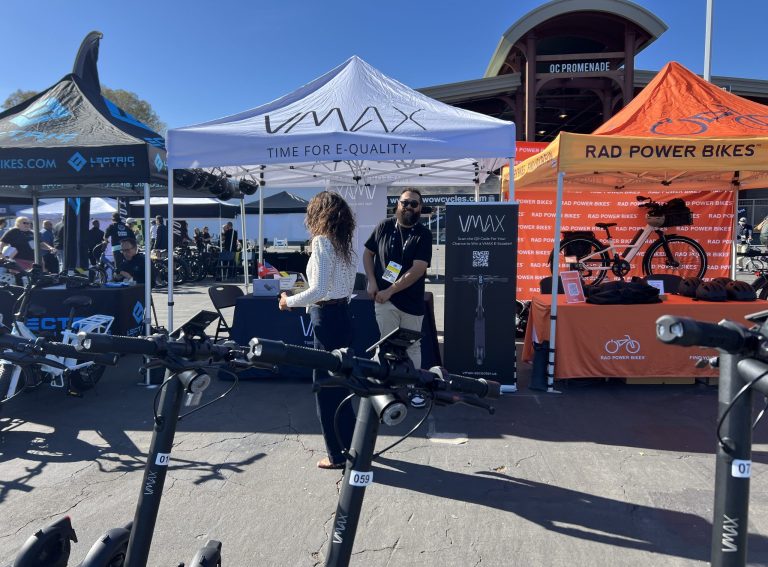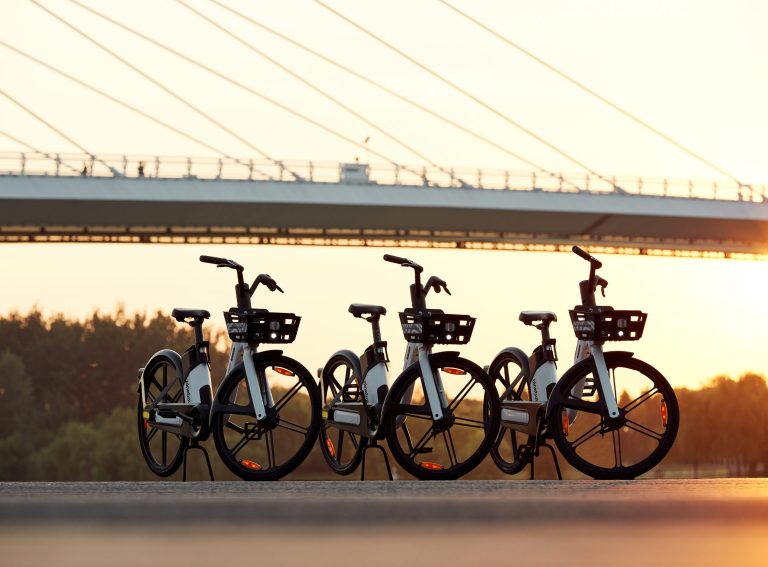Author: Nathan Ashley, Senior Public Policy Manager, Voi Technology UK, Ireland and Benelux
It strikes me as slightly ironic that we are creating what is known in business terms as a roadmap to inclusivity in our sector.
Ironic because if we could actually map our roads out in a way that caters for all members of society, then issues around inclusion would be halved in a heartbeat.
However, in the absence of such, we should focus on the fundamentals: that the micromobilty sector is at risk of excluding rather than including a wide sector of society.
What is inclusive mobility?
There is one quick and easy way of defining inclusivity in the micromobility sector. This is by asking ourselves, as the industry grows at speed, who are we leaving behind? Who is not gaining access to the micromobility sector?
The answers are many and multi-layered, and so our starting point at Voi has been an in-depth Micromobility for All report, commissioned to help us understand what’s needed to make micromobility more inclusive.
Giving access to all
Our report highlights the difference between accessibility and inclusivity. The former refers to the fact that all citizens should benefit from the same level of access to opportunities, wherever they live and regardless of their socio-economic profile.
Access to all is, in fact, just a necessary first step towards building inclusive mobility. At Voi, we have chosen inclusiveness as a keyword in our roadmap because we want to see an even bigger picture of inclusion.
Inclusion for people with disabilities, visual and hearing impairment
As part of our safety and sustainability commitment, we believe that respecting the needs of all citizens, whether they are e-scooter users, other road users or pedestrians, particularly vulnerable ones, must be central to the development of the micromobility sector.
In particular, we must listen to and learn from people with physical disabilities, visually impaired or blind people, deaf and hearing-impaired people as well as people with cognitive disabilities.
This collaboration will not only help us create vehicles that are as barrier-free as possible, but also generate trust amongst all non-users. At Voi we are working with many different access experts, from urban planners to disability charities. One recent positive output has been our redesigned parking racks, created in collaboration with the RNIB. These racks have extended and raised side panels and increased colour contrast, to help cane users locate and avoid the scooter rack more easily.
Being proactive and reactive when it comes to inclusivity
It is also crucial not to wait for communities to raise their concerns, but to be proactive from the outset. By taking this approach we promote a trusted local dialogue and quickly identify solutions to potential problems. Through such meetings, Voi has already been able to implement significant changes to local services. These include: identifying new drop-off points for vehicles and parking locations, removing any locations deemed unsafe by local charities, tackling incorrect parking with our “End Ride Photo”, and implementing our three-strike policy.
In June 2021 we were the first e-scooter company to pilot e-scooter sounds in three of our major cities (Birmingham, Bristol and Liverpool). The low hum sound, aimed at making the e-scooter more audible for hearing-impaired people, replicates the artificial engine noise introduced on electric cars in recent years. In addition, we have created an accessible website provision, with a button that allows users to select a type of facility to cater for their access needs.
Providing a tailored service with more meaningful involvement
The next stage on our inclusivity roadmap is to invest in providing a tailored service. It takes time to truly understand the specific needs of communities, and then apply inclusive practices to our fleet placement and pricing structures. We can also then address issues of territorial equity so that, for example, not only affluent areas have access to our scooters. We recently addressed territorial equity issues in Cambridge where, in response to residents’ requests in Barnwell, we extended our service into this underserved area.
Developing this tailored service approach further, our third step towards attaining inclusivity is to invite meaningful, long-term involvement at the grassroots level. Throughout the global pandemic, we have repeatedly heard the phrase “The new normal”. However, the old normal was not inclusive for many. So it is important to us at Voi that we always engage with marginalised and often forgotten groups, and learn from the mistakes of the past to solve the problems of the future.
Social equity as a pillar of sustainability in transport
We may have been guilty of focusing on the early adopters in our excitement to make e-scooters a feature of urban regeneration. However, we are aware of the role we can now play in recognising that in order to be sustainable, micromobility also needs to be socially inclusive.
Affordability is central to social equity and, at Voi, we have created Discount Passes to cater for people with varied economic circumstances, including those on low income, NHS staff, emergency workers and students. During the height of lockdown we also created free passes for NHS staff and emergency workers, with over 11,000 people benefiting from 340,000 free trips during this period.
It is also worth noting that there is also a gender gap in micromobility, with 30 per cent of UK Voi riders identifying as female. One reason for this, according to the report, is that women are more likely than men to suffer from transport poverty, saving their resources for household expenses. In February 2021, Voi joined Women in Transport to help address such issues.
To aim towards a genuine social equity in transportation, therefore, we cannot do it alone. It is only by having a meaningful engagement with councils, local charities, community advisory groups and our competitors, that we can tailor a service that includes everyone.
We hear you on the road to mobility justice
We want our local city partners, vulnerable groups, riders, local residents or visitors to know that we hear you and, with meaningful involvement we will act upon any concerns or recommendations. Our doors are always open to amplify and diversify this dialogue in a way that shows leadership not only in the micromobility sector, but in the transport sector as a whole.
I believe that the ultimate aim should be to achieve mobility justice, where the public is invited to influence the agenda within our sector. Many see this as the long route to mobility justice but, at Voi, we do not want to take shortcuts, and we believe that we have started to pave the way towards a more equitable service for all.











